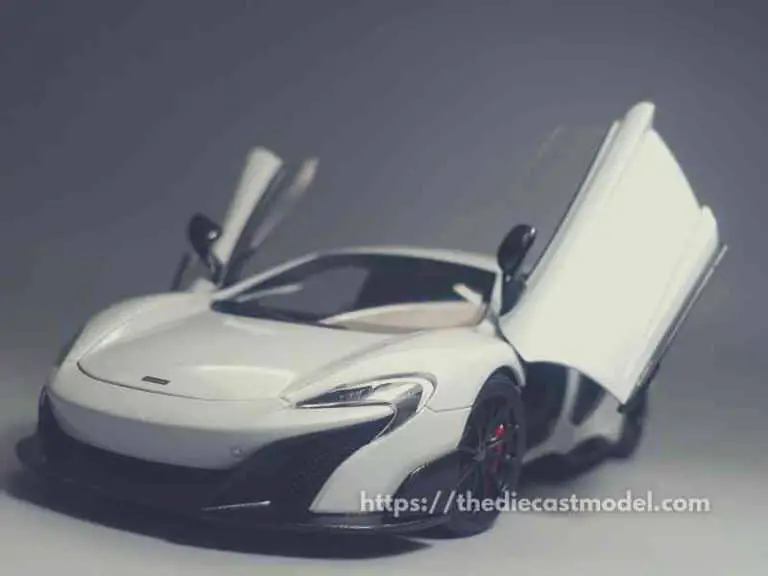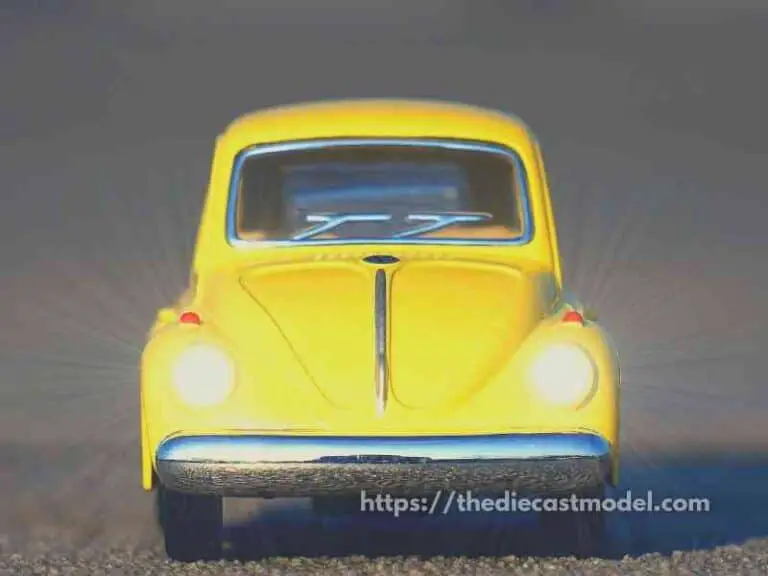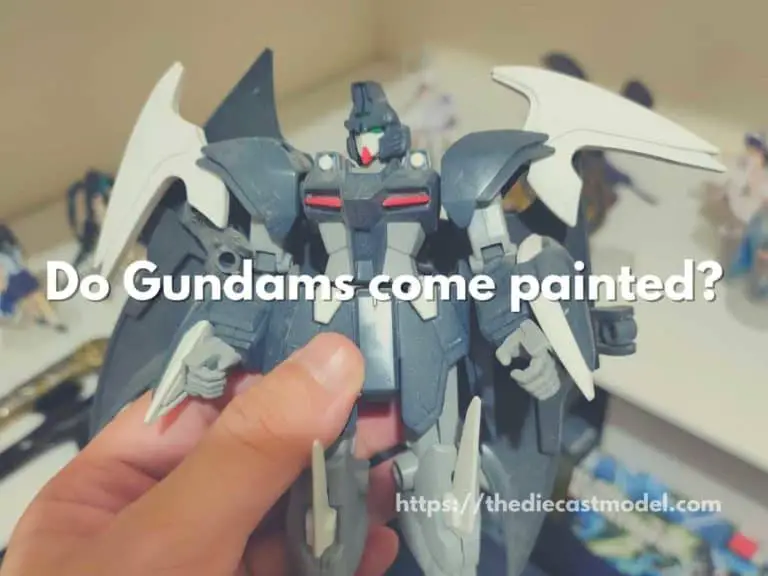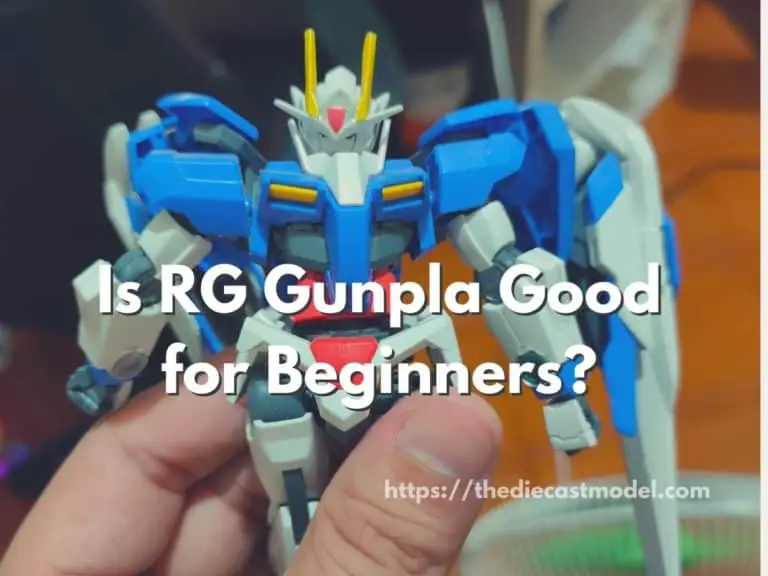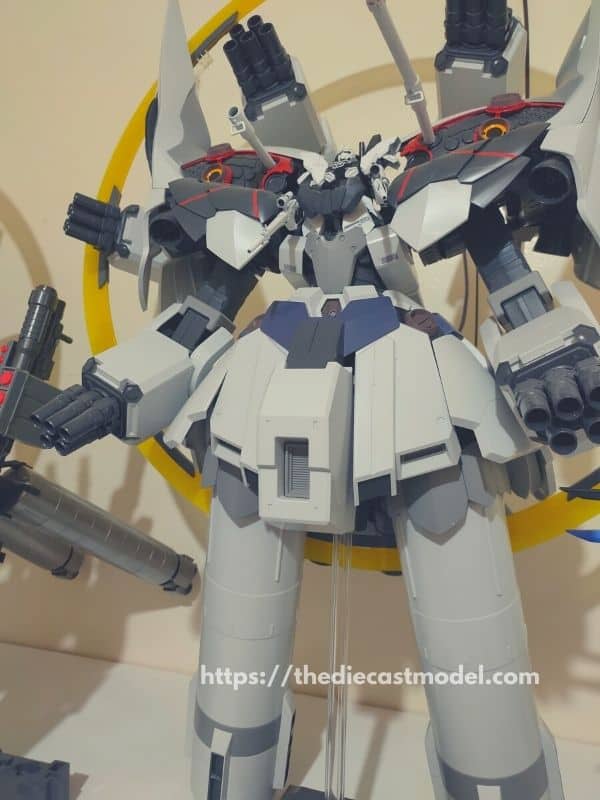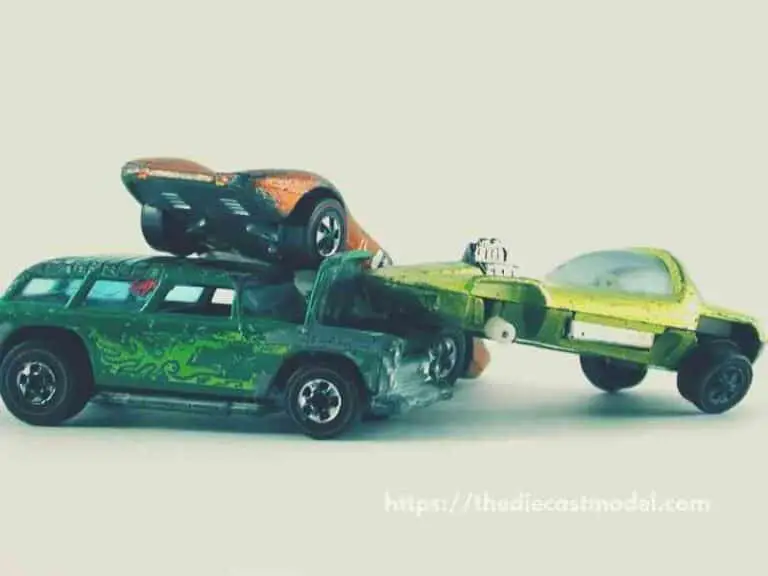Diecast Metals: Are they Magnetic?
Chances are, you have a model and suddenly wondered if these models you have are magnetic. I also wondered about the topic and did some research to satisfy our curiosity. Furthermore, I deep-dived into the scientific aspects regarding the matter to finally have the answer.
As a general rule, diecast metals are not magnetic. This is because diecast alloys are mainly made out of aluminum and zinc metals which aren’t magnetic. While these metals exhibit some magnetic properties, they only occur in highly magnetic environments, which doesn’t happen in our daily lives.
In this blog post, we will talk about the reasons why diecast metal is not magnetic. However, I also looked into their scientific aspects and have seen that they exhibit magnetic properties. Furthermore, we will talk about the advantages of diecast metals and why they can be replaced in the future.
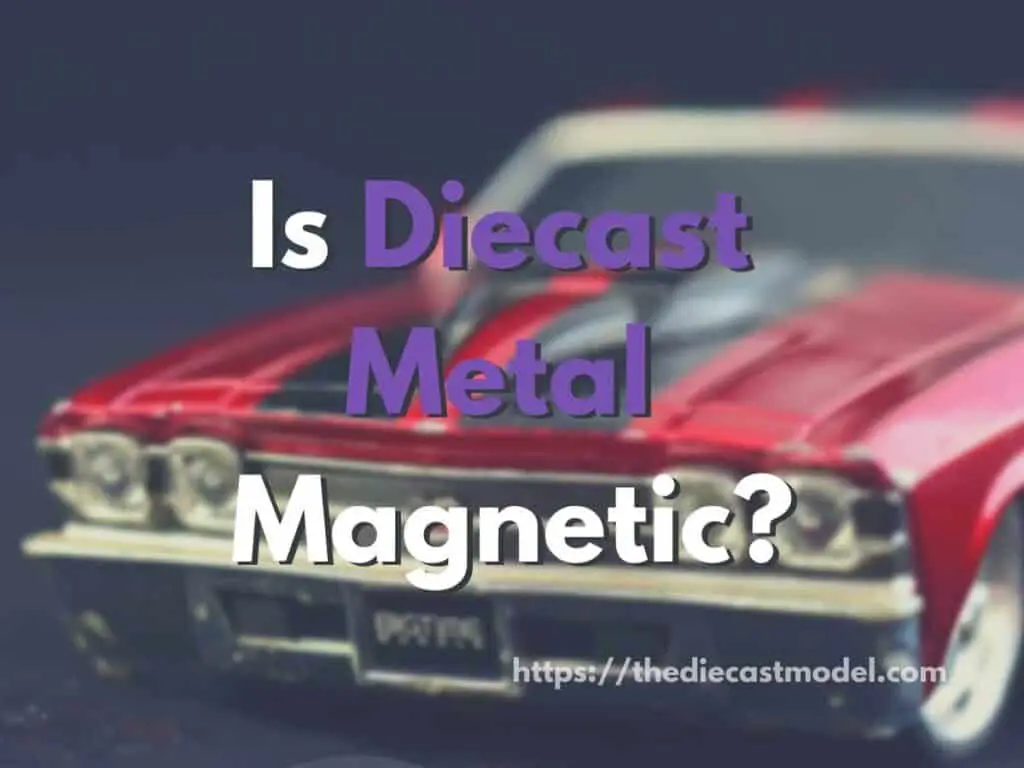
Is Diecast Metal Magnetic?
Diecast metals are those metals that are used for the assembling of diecast toys.
These metals show magnetic properties only during specific circumstances.
Otherwise, they don’t exhibit metallic properties under normal conditions.
The metals utilized in manufacturing diecast toys are either a lead alloy (utilized from the beginning) or Zamak (called Mazak in the UK) is a combination of zinc with tiny amounts of aluminum and copper.
If you’re wondering if Diecasts nowadays are safe because of lead, you may check the other blog post I made regarding the topic. Here is the link: Are Diecast Toys Safe?
It’s fantastic to see the metal’s behavior and how it can interact with magnets.
Based on Scientific Principles, it is observed that aluminum can be slightly magnetic when placed in strong magnetic fields, yet in everyday experience, it doesn’t display attraction.
In strong magnetic fields, we can say that aluminum can become slightly magnetic, but in everyday experience, it does not contain magnetism.
However, aluminum interacts with magnets in very useful and exciting ways.
What happens is that moving the magnet over the diecast model causes small electrical currents to form in the aluminum metal.
With the moving magnet, these currents interact and cause moving.
Other examples of objects affected by these magnetic properties are Power stations, Windmills, etc.
They all use the same interaction to generate electricity (but they use copper instead of aluminum).
To generate electricity anytime, you only have to move a magnet around conductive metals.
Another part of the current Diecast alloy is zinc. Hence the Zamak.
As a general rule, Zinc metal is not magnetic. Except if it is placed in a strong magnetic field. However, these situations almost never happen in real life.
So, since diecast metals are now mainly composed of these two metals, Die-cast metals are not magnetic except those made with ferrous metals.
Note: Ferrous metals are made out of iron
Diecast models made with ferrous materials are very few or even rare. That’s also why diecast metals don’t rust since rust comes from iron.
Generally speaking, diecast metals don’t rust. Instead, they would have a white or green discoloration which happens because of zinc.
If you’re interested in the topic, I made a blog post talking about that here: Do Diecast Models Rust?
I also talked about how to remove zinc oxidation in that blog post.
What is a Diecast Metal?
A diecast metal is an alloy or a combination of metals made from aluminum, magnesium, and zinc. These alloys are called Zamak or Mazak if you’re in the UK. These metals provide a versatile and cost-effective way to manufacture diecast models.
Diecast metal is used in the casting process to manufacture diecast models.
Die-cast metals are alloys of aluminum, magnesium, and zinc.
This alloy is called Zamak.
We don’t need to go to the hard concepts. Think of an alloy as a mixture or combination of metals
These are the materials that show slight magnetic properties under various circumstances.
Diecasting is a metal casting procedure that involves inserting molten nonferrous alloys into dies under high pressure and at high speed to form finished molded products rapidly.
If you’re wondering what dies are, they are the molds used in the diecasting process.
The molds, otherwise called tools, are made utilizing steel and are specifically designed for each project.
This permits every part is to be made with and repeatability and exactness.
Aluminum, Zinc, and Magnesium are the most commonly used die casting alloys because they don’t use iron.
As I said, while iron is a very strong metal, it is prone to rust.
Diecasting offers high dimensional accuracy and empowers the large-scale manufacturing of delicate, intricately molded items.
What Metal is Used For Diecast Toys?
In general, diecast toys are made using zinc metals. However, it is rare or impossible to see diecast toys using pure zinc as their material. Instead, they use a combination of metals, also known as alloys. Diecast metals are made from an alloy of Zinc, Aluminum, Magnesium, and Copper, known as Zamak.
Commonly, Aluminium metal is used for the manufacturing of diecast toys.
The majority of diecast toys are made from Zamak, a zinc alloy containing small amounts of aluminum and copper.
An attractive feature of diecast toy production is producing highly detailed precision models compared to those made from wood, plastic, and sheet steel.
Properties of Diecast Metal Aluminium
Aluminum and zinc contribute to more than 80% of all diecast parts, and there are several supportive reasons for that.
However, the diecast alloy or Zamak takes a lot of its properties to aluminum. Hence, we will talk about aluminum in this section.
Aluminum didn’t become the most well-known diecast alloy accidentally.
While aluminum diecasting may not be appropriate for every venture, it has an overall allure because of its properties.
When used in diecasting, aluminum possesses the following qualities.
Here are the properties of aluminum:
- Aluminum is lightweight
- Aluminum is strong
- Aluminum has a high melting point
- Aluminum has good thermal and electrical conductivity
- Aluminum is recyclable
- Aluminum is non-magnetic
- Aluminum doesn’t rust
A couple of these advantages (like aluminum’s solidarity and how it’s recyclable) are shared by other metal compounds.
However, aluminum is very interesting because it’s cast through a cold chamber technique instead of a hot chamber process.
This is because of aluminum’s lower melting point compared to iron.
Advantages of Using Aluminium as a Diecast Metal
The advantages of aluminum used in diecast model production are that it is lightweight, resistant to heat, resistant to corrosion, and versatile. Furthermore, aluminum allows manufacturers to make a model cost-effectively. Lastly, aluminum is rust-resistant, making models last longer.
1. Aluminum is Light Weight
One of the significant advantages of using aluminum diecast components is that they won’t add extra weight to your equipment.
If iron is used in your diecast, expect the toys to be about two or three times heavier.
Aluminum is usually a good bet when you need to guarantee that speed or balance isn’t affected by your components (like in the automotive or aerospace industries).
2. Aluminum is Resistant to Heat and Corrosion
Due to aluminum’s high melting point and higher levels of durability, you won’t have to worry about aluminum parts being insufficient to maintain their integrity in extreme temperatures and harsh conditions.
It shows that it is a dependable alloy in nearly every situation.
If you’re wondering why I said aluminum has a high melting point, that is because aluminum melts at a lower temperature than iron.
Aluminum’s melting point is still high, at 660.3°C (1,220.54°F).
In comparison, iron has a melting point of 1,538°C (2,800.4 °F)
| Iron | Aluminum | |
| Melting Point in Celcius | 1,538°C | 660.3°C |
| Melting Point in Fahrenheit | 2,800.4 °F | 1,220.54°F |
3. Aluminum is a Versatile Metal
Aluminum will serve you well if you need a component with extra-thin walls or a beautiful finish.
It’s also ideal for almost any industry.
I mentioned the automotive industry above, but aluminum die casting is also well-suited for those in the IT sector, companies specializing in technological device manufacturing, and businesses focusing on environmentally friendly practices.
It’s practically nothing surprising that aluminum diecast components are the most useful ones of all available alloys.
Disadvantage of Aluminum Diecasting
The disadvantage of using aluminum for diecasting is that it is not ideal for complex shapes and curves. In addition, with our increasing knowledge, new diecasting processes can make better-detailed models compared to Zinc or Aluminum diecasting. Examples of these are resin diecasting and AUTOArt Composite.
That’s why aluminum is not always the prioritized choice; you may find that you will be better off with resin diecasting or other types of alloys.
For complex shapes and tight tolerances, many industries benefit from diecast metal components.
With dimensional stability and high-speed production, makes it is well-suited for producing durable and high-strength metal parts.
The diecast manufacturing process is known for its cost-effectiveness and higher efficiency; it can be hard to determine which metal material will be excellent for your die casting requirements.
Which Die Cast Metal is Best for You?
The best metal for a die casting project will highly depend on the requirement of your project, including production volume, financial plan, and complexity of your parts.
If you want a cheaper model, go for the usual aluminum or zinc diecast. Their details are still our industry standards.
If you want the best detail and design, then go for Resin diecasts offered by multiple brands such as Spark models. AUTOArt composite is also a good choice.

“Only the things I love”
thediecastmodel.com is reader-supported. When you buy through links on the site, I earn an affiliate commission.
So, here are the things I love when taking care of my Diecast Models.
Cleaning the Models
The first we are going to talk about is cleaning the models.
Removing Dust
- Air Brush – For me, this is the best since it not just removes dust but you can use it in painting/clear coating.
- Air Duster – This is a good alternative to Airbrush
- Normal Brush – If you are short on budget, you can use a normal brush. However, make sure that the brush has soft bristles because there are some hard brushes than can cause scratches. That’s why I recommended a good brush that can do the job properly.
Cleaning and Shining Hacks
Well, here are some of my cleaning hacks for removing scratches, oxidation, and so much more.
- Removing Decal Adhesive – Use Goo Gone on those hard-to-remove decal adhesives. It works fast and works like charm!
- Waxing and Polishing – Here is something a lot of people don’t know. Waxing protects the clear coat and paint while polishing shines the model. Instead of buying it separately, use a 2 in 1 to save money. Get this instead.
- Beginner Wax – The wax I recommended earlier is good and provides the best results based on my experience. But a beginner might have a problem especially if they’re not good at applying wax. Solid wax reaching hard to reach surface can be hard to remove. You have two choices here. One is to use a qtips to reach those surfaces, another is to use a liquid wax I recommended.
- Cleaning Wheels, Rubber, Plastic – Do not forget that rubber and plastic surface are quite different, especially in the cleaning process. Just wiping it down won’t do the job. That’s why I use Meguiar’s Vinyl and Rubber Cleaner and Conditioner. Works like charm!
- Make the Wheels Shine! – Making our models look good won’t be complete without tiny details such as shiny wheels! Do not forget this because however small this is, the difference can be as big as night and day.
- Remove Scratches Easily – Tiny scratches are not the end for your model. Here is a simple trick I’ve been using to make my models look scratch-free even without repainting. Use T-Cut.
Painting the Models
Painting Tools
Make sure when you paint models, have these ready.
- Tape – A tape is important if you are painting a straight line. Furthermore, it will prevent your paint to scatter on other parts. I recommend Tamiya Tape since it is really made for models. Furthermore, they stick really well preventing paint splatters.
- Brush (Beginner) – Find a good set of brushes to paint your models. Of course, you can opt for an airbrush but it’s quite expensive.
- Airbrush (Intermediate/Expert) – This will yield a significantly better result than an ordinary brush because you can easily spray the paint evenly. I recommend this if you know what you’re doing.
- Stand(Optional) – Stands are good because it can be hard to manually hold the models while painting. It is optional but in my opinion, the price is well worth it for the comfort it gives.
- Drop Cloths – Drop Cloths will protect your surroundings from the paint.
- Primer – The most common beginner mistake I see is painting models without any Primer. A primer will prevent imperfections such as bubbles or paint not sticking to your models. It is a small price to pay for quality results.
- Clear Coat – A clear coat will protect the paint of your models. This will make the paint last longer. Also, it is the one responsible for making your models shine.
Paints
Of course, you can’t do painting properly without paint. So here are the ones I recommend.
- Acrylic Paint – Good for beginners because it dries quickly. However, it doesn’t produce results as good as enamel paint.
- Enamel Paint – Provides a good quality finish and longer-lasting paint. However, it takes longer to dry and requires expertise to use.
Model Maintenance
Model Storage
- Simple Wood Cabinet – While it doesn’t let you display your models, wooden cabinets are good storage for these models. For one, they are not heat conductors which means that the temperature inside will remain constant and remain cool. Furthermore, they prevent light from reaching the models which can cause oxidation.
- Clear Cabinet with Lock – If you want to display your models, then I recommend this. It closes so dust won’t easily get to your models. I also recommend you don’t put more than 1 model in each compartment since metals are good conductors of heat.
Model Photography
So you want to show off your models to others? Well, I got you covered.
Here is my beginner-friendly model photography tutorial that teaches everything from taking pictures to the editing process.
You will also see me doing hands-on photography in that tutorial.
Here is the link: How to Take Pictures of a Diecast Model or Model Kit | Helpful Illustrated and Video Guide

